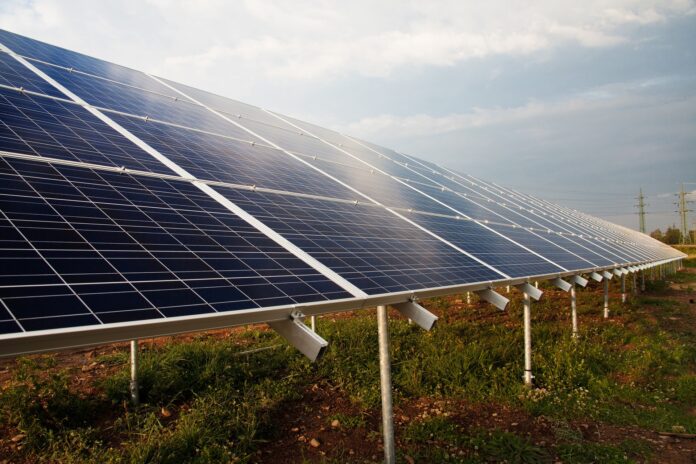Photovoltaic panels, or solar panels, have become increasingly popular as a sustainable and cost-effective source of energy. One of the concerns that homeowners and businesses have is whether these panels can withstand hailstorms. Hailstones can vary in size, from pea-sized to golf ball-sized, and can cause significant damage to properties. In this article, we will explore the resilience of photovoltaic panels to hailstorms.
Understanding Photovoltaic Panels
Before we dive into the impact of hailstones on photovoltaic panels, it is essential to understand how these panels work. Photovoltaic panels are made up of solar cells that convert sunlight into electricity. These cells are made of semiconductors, usually silicon, and are coated with an anti-reflective coating that increases their efficiency in capturing sunlight. When sunlight hits the cells, it creates an electric field that generates a flow of electricity. The electricity produced by the panels is then sent to an inverter that converts it into usable electricity for homes and businesses.
Resilience of Photovoltaic Panels to Hail
Photovoltaic panels are designed to withstand harsh weather conditions such as wind, snow, and rain. However, the impact of hailstones on these panels depends on various factors such as the size and density of the hailstones, the angle of impact, and the design and quality of the panels.
Size and Density of Hailstones
The size and density of hailstones play a significant role in the impact they have on photovoltaic panels. Hailstones larger than an inch in diameter can cause significant damage to the panels, whereas smaller hailstones may not cause much harm. The density of the hailstones also plays a role, as denser hailstones are more likely to cause damage than less dense ones.
Angle of Impact
The angle at which the hailstones hit the panels can also determine the damage they cause. If the hailstones hit the panels at a perpendicular angle, they are more likely to cause damage than if they hit the panels at an angle. Panels that are mounted at an angle are less likely to be damaged by hailstones as they are more likely to deflect the hailstones away.
Design and Quality of Panels
The design and quality of the panels also determine their resilience to hailstones. High-quality photovoltaic panels are designed to withstand extreme weather conditions, including hailstorms. These panels are made with thicker glass and can resist the impact of hailstones better than low-quality panels.
Warranty
Most photovoltaic panel manufacturers offer warranties that cover damage caused by hailstorms. The length and extent of the warranty vary by manufacturer, so it is important to review the warranty before purchasing the panels. Homeowners and businesses should also check with their insurance provider to see if hail damage to their solar panels is covered under their policy.
Preventive Measures
There are preventive measures that homeowners and businesses can take to reduce the impact of hailstorms on their photovoltaic panels. One of the most effective ways is to install panels that are designed to withstand hailstorms. Homeowners and businesses can also install hail guards or hail nets over their panels to reduce the impact of hailstones. Hail guards and nets are made of strong materials that can withstand the impact of hailstones. However, it is important to note that these measures may not be effective against large hailstones.
FAQs
- Can small hailstones damage photovoltaic panels?
Small hailstones are unlikely to cause significant damage to photovoltaic panels.
- What is the impact of large hailstones on photovoltaic panels?
Large hailstones can cause significant damage to photovoltaic panels, particularly if they are over an inch in diameter.
- Do all photovoltaic panel manufacturers offer warranties that cover hail damage?
Most photovoltaic panel manufacturers offer warranties that cover damage caused by hailstorms, but the length and extent of the warranty vary by manufacturer.
- Can homeowners and businesses install hail guards or nets over their photovoltaic panels?
Yes, homeowners and businesses can install hail guards or nets over their photovoltaic panels to reduce the impact of hailstones.
- Are photovoltaic panels more vulnerable to hail damage than traditional roofing materials?
Photovoltaic panels are more resilient to hail damage than traditional roofing materials such as asphalt shingles.
Conclusion
Photovoltaic panels are designed to withstand harsh weather conditions, including hailstorms. The impact of hailstones on these panels depends on various factors such as the size and density of the hailstones, the angle of impact, and the design and quality of the panels. High-quality panels are more resilient to hailstones than low-quality panels, and most manufacturers offer warranties that cover hail damage. Homeowners and businesses can also take preventive measures such as installing hail guards or nets over their panels to reduce the impact of hailstones. In general, photovoltaic panels are a durable and sustainable source of energy that can withstand various weather conditions, including hailstorms.
The article was written in cooperation with the experts of mafot.com – installation elements for photovoltaics












